![]()
![]()
![]()
Use LEFT and RIGHT arrow keys to navigate between flashcards;
Use UP and DOWN arrow keys to flip the card;
H to show hint;
A reads text to speech;
33 Cards in this Set
- Front
- Back
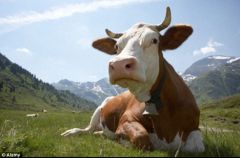
What should the daily routine of a cow be to ensure optimum digestion? |

Lie down for 12-14 hours. Eat for 3-4 hours. Drinking for 1 hour. 10-20 meals. 10 hours ruminating. Producing 100-150 litres of saliva which consists of 3.5 kg of sodium bicarbonate. Chew, crush and fragment forage. |
|
|
What are the main products of rumen fermentation? |
VFA- acetate, butyrate and propionate. Ammonia. Microbial cells. Gas- 40% methane 40% CO2 5% hydrogen. |
|

What do high levels of fibre in the ration lead to in terms of quality of milk? What VFA's are primarily produced from fibre? |
Higher butterfat. VFA- Acetate the main precursor of butterfat. |
|

If a cow has a high concentrate, what is the main VFA produced?? |
Propionate. Main precursor of glucose. |
|
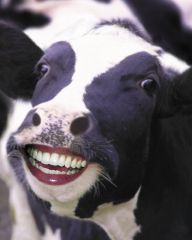
What factors are necessary for optimal rumen function and digestion of forage? |
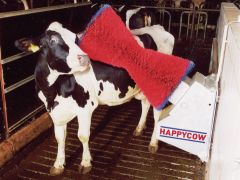
A pH of 6.5 to 7. Optimum cow comfort and healt. Sufficient ERDP. No sudden dietary changes or excessive carbs. |
|
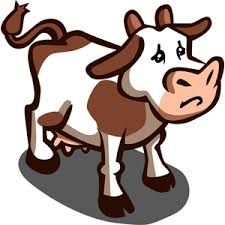
What factos disturb rumen flora? |
Cow comfort thats bad- poor housing and overcrowding. Cow can't lie down. Excess carbs. Imbalance in protein:energy ratio. Poor silage quality. Lack of coarse fibre. Sudden diet changes!! |
|
|
As a rule of thumb how much DMI should a cow be consuming? |
Body weight 2.5-3% 10% of her milk yield |
|
|
What cow factors influence a cows DMI intake? |
Bodyweight. Stage in lactation- depressed by 2-3 kgs in freshly calved. Milk yield- the higher the bigger the appetite. Stage of pregnancy- Late pregnancy it decreases. BCS- fat cows eat less Cow comfort, health and disease. Rumen health. |
|
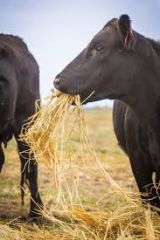
What food factors influence how much Dry matter a cow consumes? |
Digestibility- the higher this the more she takes in. Concentrates. Forages- Rumen fill constrains intake. Diets low in ERDP have low DMI. Palatability. |
|
|
What management factors influence a cows DMI? |
1) Mixed forages increases intakes by 5% 2) TMR increases intakes by 20-30% 3) Out of parlour feeders increase intakes by 5-10% 4) Frequency of food presentation- novelty items increase intake. 5) Restricting food access decreases intakes. 6) Water access. 7) Cow comfort. |
|
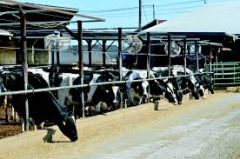
What things restrict a cows DMI in terms of management issues? |
Troughs empty decrease. Not pushing food forward. Insufficient trough space. Self feed silage systems reduce intakes by 5-10% Electric fence reduce 5-10% Heifers competing with cows reduce 5-10% |
|
|
What is the target DMI for a 700 kg dairy cow in late pregnancy? Cows in mid lactation? |
12-15 kg DMI/day 25-30 kg DMI/day |
|
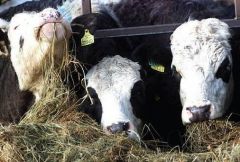
How can we optimise DMI? |
1) Ensure optimum rumen health 2) Present good palatable food 24 hours a day. 3) Adequate trough space 24 cm per cow. 4)EXCELLENT COW COMFORT 5) Push ration forward. 6) Mix TMR well. |
|
|
What is a good rule of thumb for ensuring cows are getting sufficient ad lib DMI? |
5-10% IS LEFT OVER AFTER A DAY!! |
|
|
What are the energy requirments in ME for a dairy cow? Per litre of milk?
|
70-80 MJ of ME per day proportional to her BW. 5 MJ of ME proportional to the quality of her milk and quantity. (6/MJ jersey) |
|
|
What other factors are needed to be factored in for calculating a cows energy requirements? |
Energy losses- - 22MJ of ME to lose Energy gain 36 MJ ME Stage of pregnancy. Reductions in DMI. BCS. |
|
|
What are the two component of MP? |
Microbial protein and bypass protein (DUP) |
|
|
What limits the supply of microbial crude protein? |
ERDP Suppy of energy FME to the microbes. |
|
|
What is meant by the term diet synchrony? |
Balance between both energy ME and FME and protein ERDP and DUP |
|
|
Why is fibre important to ruminants? |
Essential energy source. Produces acetate the main constitute of butterfat. Promotes rumination. To form the rumen mat. |
|
|
How is fibre content measured in the lab usually and what does it constiute? |
NDF- neutral detergent fibre (Cellulose, lignin, hemicellulose) Classified as cellulosic or non cellulosic. |
|
|
Name quickly fermentable sources (Non cellulosic) of energy in the cow diet? What VFA does it mainly produce? |
Starches, sugars, pectins. Young grass, cereal grains, mollasses, root crops, maize silage. Butyric acid and propionic acid. |
|
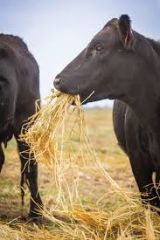
Name slowly fermentable sources of NDF (Cellulosis)? What VFA do they mainly produce? |
Cellulose, hemicellulose, lignin Straw, hay, grass (exception young), Silage ( Except maize), Brewers grains. ACETATE!!!!! |
|
|
High NDF doesn't always mean the rumen will be stimulated, what is the other critical factor needed in the NDF to allow rumination? |
Physical form of the food. Fiber length is important. 2.5 cm to 10 cm in length. |
|
|
How much water does a cow need for litres of milk produced? |
2-3 litres of water for every kg of milk produced. |
|
|
Why is the management of dry cows so important? |
Increased DMI in early lactation. Reduce disease problems. Increased milk production. |
|

Aims of transitional cow management? |
Get cow ready for coming lactation. Maintain a positive energy balance. Good immune function. Prevent milk fever. |
|
|
What two periods can the dry period be divided into? |
Far off dry period. 1-2 months prior to calving. Transition period 3-4 weeks post calving. |
|
|
What is the aim of the far off period of the dry period? |
Allow cow to recuperate and get in the correct BCS before calving of 2.5-3.0. |
|
|
How do we manage a cow successfully in the transition period? Why is this of benefit? |
Introduce good forages and some concentrates! Allows cow to increase DMI, increase milk production and prevent disease. Allows her rumen microflora to adjust to the concentrates |
|
|
What should the BCS of a cow be in the near dry period? When do we adjust this? |
2.5-3 Adjust only in faroff |
|
|
How much concentrate per day should we feed cows in the near period? |
2-3 kg per day. |
|
|
What can we supplement cows with to prevent milk fever in the dry period? |
Magnesuium |

